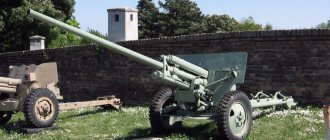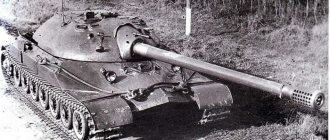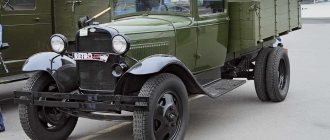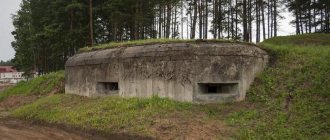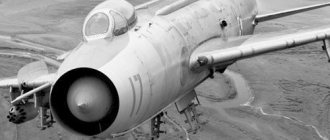In the protocol of interrogation of German prisoners of war it was about, and the captured corporal stated that “there were many cases of madness in the village of Popkovo due to the artillery cannonade of the Soviet troops.” This was the psychological effect of the use of the Soviet multiple rocket launch vehicle BM-13 in July 1941.
When did the first salvo of the Katyusha, as Soviet soldiers affectionately called it, occur? And what were the goals of this salvo?
Let's look at this in our material devoted to two multiple launch rocket systems: one of the most effective systems of the past and the newest Polonaise system of Belarusian-Chinese production, which can change the balance of power in the European theater of operations.
The material consists of two articles:
- the first is dedicated to the BM-13 combat vehicle and when, where and under what circumstances the first Katyusha salvo took place,
- the second is dedicated to the new Belarusian-Chinese multiple launch rocket system (MLRS), which, according to some information, is “quasi-ballistic”, which means it can change the balance of power in Europe.
Reference
BM-13 is a Soviet rocket artillery combat vehicle during the Great Patriotic War, the most popular and famous Soviet combat vehicle (BM) of this class. Most widely known by the popular nickname "Katyusha", soldiers of the Third Reich called it "Stalin's organ" because of the sound made by the fins of the rockets.
The first salvo of the Katyusha - the first combat use of the BM-13 combat vehicle took place on July 14, 1941 near Orsha. The first salvos were fired by the first separate experimental battery of field rocket artillery of the Red Army under the command of Captain I.A. Flerov.
Captain Ivan Andreevich Flerov Photo: arms-expo.ru
The battery was formed at the end of June 1941 and was equipped with seven combat installations of the RNII (Rocket Scientific Research Institute) of the Red Army and one 122-mm sighting howitzer.
After three sighting shots from a howitzer, on July 14 at 15:14, the battery opened fire on the Orsha railway junction, where, according to military intelligence reports, a lot of enemy equipment was concentrated. 112 RS (missiles) were fired.
Designer Alexey Popov Photo: arms-expo.ru
According to the memoirs of A.S. Popov, one of the creators of “Katyusha”:
“the railway junction was wiped off the face of the earth.” The Nazis were literally stunned by this firestorm from a weapon they did not understand and began to flee in panic. It took the enemy considerable time to rally the demoralized units.”
On the same day, a fire strike from the new weapon was carried out at the German crossing of the Orshitsa River. The result was the same.
On this day, in his diary, the Chief of the German General Staff, Halder, wrote:
“On July 14, near Orsha, the Russians used weapons unknown until that time. A fiery barrage of shells burned the Orsha railway station and all the trains with personnel and military equipment of the arriving military units. The metal was melting, the earth was burning.”
On August 8, 1941, the Katyushas were deployed in the Kiev direction. This is evidenced by the following lines of a secret report to Malenkov, a member of the Central Committee of the All-Union Communist Party of Bolsheviks:
“Today at dawn at the Kiev UR, new means known to you were used. They hit the enemy to a depth of 8 kilometers. The installation is extremely efficient. The command of the area where the installation was located reported that after several turns of the circle, the enemy completely stopped pressing the area from which the installation was operating. Our infantry boldly and confidently moved forward.”
The same document indicates that the use of the new weapon caused an initially ambiguous reaction from Soviet soldiers, who had never seen anything like it before.
“I am telling you how the Red Army soldiers told it: “We hear a roar, then a piercing howl and a large trail of fire. Panic arose among some of our Red Army soldiers, and then the commanders explained where they were attacking from and where... this literally caused the soldiers to rejoice. The artillerymen give very good feedback..."
This was the first combat use of Katyushas.
Video: https://www.youtube.com/watch?v=hMM9ehs6fXs
Fire sword of the "god of war"
By May 1945, rocket artillery units had about three thousand combat vehicles of various types and many “frames” with M-31 shells. Not a single Soviet offensive, since the Battle of Stalingrad, began without artillery preparation using Katyusha rockets. Salvos from combat installations became the “fiery sword” with which our infantry and tanks made their way through enemy fortified positions. During the war, BM-13 installations were sometimes used for direct fire at enemy tanks and firing points. To do this, the combat vehicle drove its rear wheels onto some elevation so that its guides assumed a horizontal position. Of course, the accuracy of such shooting was quite low, but a direct hit from a 132-mm rocket would blow any enemy tank to pieces, a close explosion would knock over enemy military equipment, and heavy hot fragments would reliably put it out of action.
After the war, Soviet designers of combat vehicles continued to work on Katyushas and Andryushas. Only now they began to be called not guards mortars, but multiple launch rocket systems. In the USSR, such powerful SZOs as “Grad”, “Hurricane” and “Smerch” were designed and built. At the same time, the losses of an enemy caught in a salvo from a battery of Hurricanes or Smerchs are comparable to losses from the use of tactical nuclear weapons with a yield of up to 20 kilotons, that is, with the explosion of an atomic bomb dropped on Hiroshima.
When were multiple rocket launchers developed?
It is often stated about the birth of the Katyusha that the Soviet high military command first saw it a few days ago, and the government decided to adopt it a few hours before the start of the war. And this is true for the specific BM-13 model, but the development of multiple rocket launchers began earlier.
Even two and a half years before the start of the war - from December 8, 1938 to February 4, 1939 - at the GAU training ground in Kazakhstan, field and state tests of mechanized multiple rocket launchers were successfully carried out on the ZIS-5 vehicle: 24-round MU-1 and 16-round MU-2 for firing RS-132 missile shells.
The MU-1 had a number of shortcomings, and the MU-2 (drawing No. 199910) on the three-axle ZIS-6 vehicle was planned to be put into service in 1939. The State Commission was headed by the deputy head of the GAU and the head of the Artkom, corps commander (since May 1940, Colonel General of Artillery) V.D. Grendal.
Just before the start of the Finnish War, from October 26 to November 9, 1940, demonstration firing tests of rocket technology were carried out at the Rzhev test site near Leningrad, including the BM-13-16 mechanized launcher on the ZIS-6 chassis.
The commission was headed by the chief of artillery of the Red Army, corps commander (since May 1940, colonel general of artillery) N.N. Voronov. Based on the positive test results, NII-3 was obliged to introduce serial production of mechanized installations BM-13-16, called “object 233” in industry in 1940 (interestingly, the production of RS-132 was not assigned to NII-3; this was how it was carried out throughout that year serial factories of the People's Commissariat of Ammunition).
It is known that several types of rocket launchers on tanks were used to break through the Mannerheim Line. The fact that it was “Katyushas” that were mass-produced even before the start of the war is evidenced by a number of other facts:
- of the 7 launchers of the Flerov battery, only 3 were manufactured by NII-3, and the remaining 4 were made somewhere else
- already on July 3, the first Katyusha division was formed (43 installations, including 7 Flerov ones)
- already by mid-August 1941, 9 four-divisional Katyusha regiments (12 installations in each), 45 divisions were formed, and in September another 6 three-divisional regiments armed with BM-8 and BM-13 combat installations. The regiment consisted of three divisions of three batteries. Each battery had four combat vehicles. The regiments being formed received the name “Guards Mortar Regiments (GMR) of the artillery of the Supreme High Command Reserve.”
How was it structured?
The BM-13 combat vehicle was a chassis of a three-axle ZIS-6 vehicle, on which a rotary truss with a package of guides and a guidance mechanism was installed. For aiming, a rotating and lifting mechanism and an artillery sight were provided. At the rear of the combat vehicle there were two jacks, which ensured its greater stability when firing. The missiles were launched using a hand-held electric coil connected to a battery and contacts on the guides. When the handle was turned, the contacts closed in turn, and the starting squib was fired in the next projectile. The explosive material in the warhead of the projectile was detonated from both sides (the length of the detonator was only slightly less than the length of the explosive cavity). And when two waves of detonation met, the gas pressure of the explosion at the meeting point increased sharply. As a result, the hull fragments had a significantly higher acceleration, heated up to 600-800 ° C and had a good ignition effect. In addition to the body, part of the rocket chamber also burst, which was heated from the gunpowder burning inside; this increased the fragmentation effect by 1.5-2 times compared to artillery shells of the same caliber. That is why the legend arose that Katyusha rockets were equipped with a “thermite charge”. The “thermite” charge was indeed tested in besieged Leningrad in 1942, but it turned out to be unnecessary - after the Katyusha salvo, everything around was burning. And the joint use of dozens of missiles at the same time also created interference of blast waves, which further enhanced the damaging effect.
Fights in the information space for the first salvo of Katyusha rockets
There are quite a few publications on the network that the first Katyusha salvo was fired at Soviet trains captured by the Germans, some even suggesting the presence of Katyusha installations, which assumption allows them to write beautiful headlines like:
- 2012 - Was the first Katyusha salvo fired at Katyushas?
Such publications began with an article by Andrei Aleksandrovich Petrov, who is always presented as an engineer and reserve colonel, apparently in order to give the words of the former military man more weight:
- 2008 - The mystery of the first salvo of Katyusha rockets
This article, as you can see, was published in the famous liberal newspaper Nezavisimaya Gazeta and was copied by other resources, sometimes with creative additions:
- 2010 - Katyusha. Myths and reality
- 2014 - “Katyusha”: mysteries of the legend
In the article by Andrei Petrov, replete with exaggerations, unfounded assumptions and simply outright fabrications, which underlies other articles touching on this topic, the following is stated “with the precision of a cartridge being fired into the chamber”:
"First. The Germans suddenly captured Orsha. Second. The railway junction turned out to be clogged with our military trains. Third. Among them were especially important ones. It was impossible to allow these particular echelons to fall to the enemy. Fourth. General Cariofilli knew for sure that there was a concentration of trains at the Orsha station (it is usually not specified that these were our trains). Fifth. The combat use of the BM-13 made it possible to successfully solve the problem that arose. The Germans were able to get little."
The main argument that the author relies on when making such conclusions is that the Germans simply could not manage to fill Orsha with their echelons by the time the first Katyusha salvo was fired. Everything else revolves around this. Let's look at this argument in more detail, checking the author's bold statement about the slowness of the Nazis.
Image: lemur59.ru
On July 9, 1941, the Germans were already in Borisov (from which Orsha is 130 km), and by July 10 they were practically near Orsha, only 40-50 km away. Now let’s find out how fast the Germans changed the track.
According to Major General Gerecke, head of the main transport department, railway soldiers provide 20 km per day of conversion to German gauge
. The German track ran all the way to Smolensk, but it was not possible to reach the capacity necessary for uninterrupted preparations for the offensive.
Robert Forczyk also writes that two railway regiments assigned to the GA “Center” rebuilt up to 20 km of tracks per day
(Robert Forczyk 'Moscow 1941. Hitler's first defeat', 2006. P. 23)
Simple calculations: 5 days for 20 km - 100 km of resurfaced roads.
In addition, we add that the need for the armies of the Center group to re-paint roads was very high:
“According to calculations, Army Group Center needed 34 trains (each 450 tons) daily to solve all the tasks assigned to it. However, she received a maximum of 18, and even then at best. The 9th Army (Army Group Center) complained in early July that two-thirds of its daily supplies were missing
».
Therefore, the Germans were very motivated to use the Orsha junction as soon as possible, for which reason the assertion that there were Soviet trains at the station is based only on the assumption that the Germans would not have time, in the personal opinion of the author of the article, to carry out the rewiring operation, which is not corresponds to the actual capabilities of technology and the needs of the Germans. And these needs were not met in August 1941, which can be understood from the diary of Halder Franz (Halder F. Military diary. Daily notes of the Chief of the General Staff of the Ground Forces 1939-1942 - M.: Voenizdat, 1968-1971). Entry dated August 3, 1941:
“The situation with ammunition has also improved in the troops of Army Group North, where the railway gauge has been changed to the German standard {425} to Pskov.”
Entry dated August 11:
“Only 13 echelons arrive daily in the Army Group Center zone. The reason for this is the alteration of the railway track and the failure of part of the rolling stock.”
Moreover, we are making a big discount, indicating 100 km, when the front line on July 10 already passes near Orsha, which means that from the 10th the Germans in this area have a stable rear and they have time to redo the road.
Image: ulansv.narod.ru
But other authors copy the text of this article with gusto and even artistic embellishment (a striking example). And some go further and, trying to support their fabrications about the conspiracy of Stalin and Hitler, write:
“Oddly enough, it turned out that, most likely, the first salvo of Flerov’s Katyushas was fired at the composition (or compositions) of other Katyushas, which moved to the western border even before the start of the war, so that, according to the secret agreement of Stalin and Hitler, To transfer the great anti-British transport operation through Germany to the shores of the English Channel (one of the authors of this publication first published such a hypothesis of the beginning of the war in 2004).
We will not analyze this bold hypothesis; there are many revelations of Rezunovism on the Internet:
- Vladimir Gryzun “How Viktor Suvorov composed history” is an excellent banter book, written easily and with a fair amount of healthy humor.
- Alexey Isaev “Antisuvorov. The Little Man's Big Lies" is a much more "academic" but no less interesting book. For those especially interested, there is another book by the same author, Antisuvorov. Ten myths of World War II."
- Arsen Martirosyan “Stalin and the Great Patriotic War” is a book about the most famous myths about the Second World War associated with I.V. Stalin, including Stalin’s alleged plans to attack Germany.
Let us only note the courage of the authors regarding the purpose of the first Katyusha salvo. And the dubiousness of the “main argument”.
BM-13 combat vehicle on a three-axle vehicle chassis
The caliber of the projectile is 132 mm. Projectile weight - 42.5 kg. The mass of the warhead is 21.3 kg. The maximum projectile flight speed is 355 m/s. Number of guides - 16. Maximum firing range - 8470 m. Loading time of the installation - 3-5 minutes. The duration of a full salvo is 7-10 seconds.
Guards mortar BM-13 Katyusha
1. Launcher 2. Missiles 3. Vehicle on which the launcher was mounted
Guide package Cabin armored shields Travel support Lifting frame Launcher battery Sight bracket Rotating frame Lifting mechanism handle
The launchers were mounted on the chassis of ZIS-6, Ford Marmont, International Jiemsi, Austin vehicles and on STZ-5 tracked tractors. The largest number of Katyushas were mounted on all-wheel drive three-axle Studebaker vehicles.
M-13 projectile
01. Fuse retaining ring 02. GVMZ fuze 03. Detonator block 04. Bursting charge 05. Head part 06. Igniter 07. Chamber bottom 08. Guide pin 09. Powder rocket charge 10. Rocket part Grate 12. Nozzle critical section 13. Nozzle 14. Stabilizer
Few survived
The effectiveness of the combat use of Katyushas during an attack on an enemy fortified unit can be illustrated by the example of the defeat of the Tolkachev defensive unit during our counteroffensive near Kursk in July 1943. The village of Tolkachevo was turned by the Germans into a heavily fortified resistance center with a large number of dugouts and bunkers of 5-12 roll-ups, with a developed network of trenches and communication passages. The approaches to the village were heavily mined and covered with wire fences. Salvos of rocket artillery destroyed a significant part of the bunkers, the trenches, along with the enemy infantry in them, were filled up, and the fire system was completely suppressed. Of the entire garrison of the junction, numbering 450-500 people, only 28 survived. The Tolkachev junction was taken by our units without any resistance.




